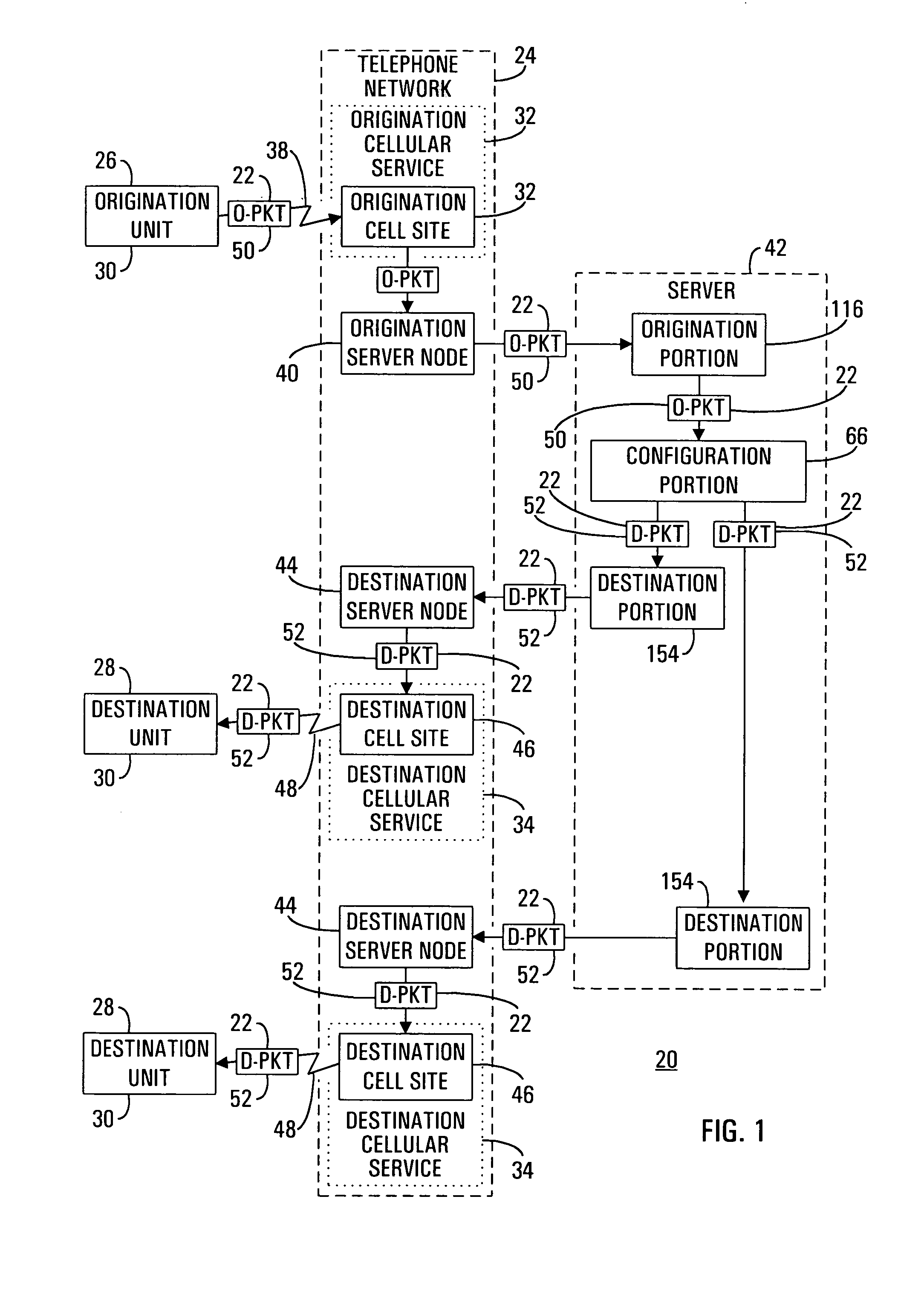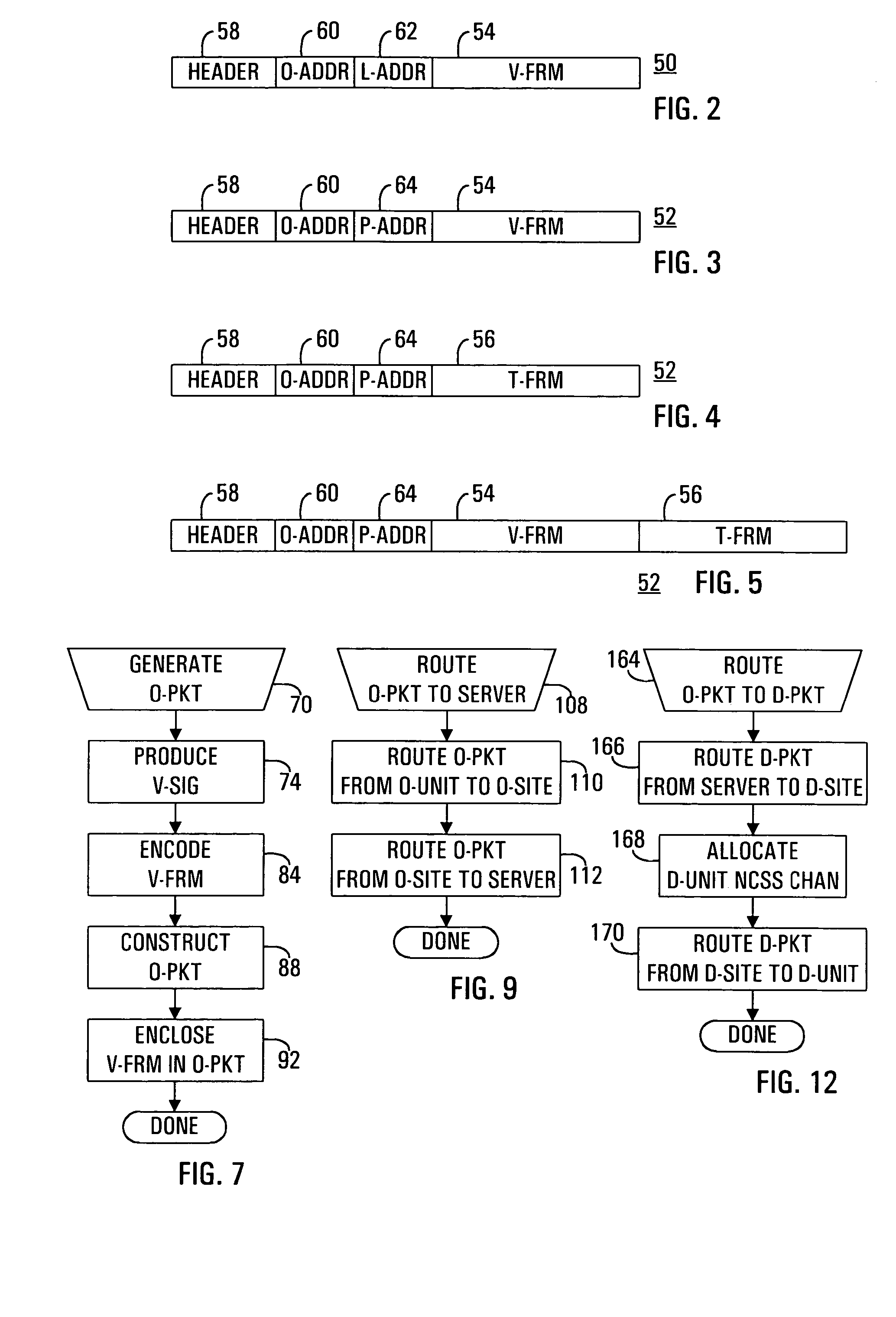Dispatch radios share many problems with other simplex systems, e.g., construction-site walkie-talkie radios, personal-service radios, and other business radios.
By necessity, the number of units in such systems is severely limited.
This limitation is both a
weakness and a strength of such systems.
Since only one unit of a communicating pair may be transmitting at one time, interruptions are impossible, regardless of the urgency involved.
PTT systems suffer from a significant number of problems.
A major one of these problems is that PTT systems are typically proprietary.
The equipment is therefore often more expensive than similar equipment for other services, even though that other equipment may be more sophisticated than the needed equipment.
The reasons for this are complex, involving the scale of production as well as the lack of competition.
This again leaves the user / owner at the mercy of the manufacturer through the
service personnel, resulting in a decrease in competition and an increase in service expenses.
Because such PTT equipment is often manufactured and serviced by a single company, the user / owner may well be left without support of any kind should that manufacturer cease to do business.
Alternatively, the user / owner of the equipment may be faced with a considerable difficulty should the local
service agency of the equipment manager cease to represent that manufacturer.
This often necessitates that the equipment be returned to the manufacturer for servicing, thereby effecting unreasonable delays.
That is, while the PTT dispatch
system used by a taxicab company is similar in design and function to that used by a fire department, they are designed to operate at different frequencies and are not interchangeable.
Because of this incompatibility of hardware and operating frequencies, two different PTT systems cannot readily intercommunicate.
This is not normally feasible without a special cross-service dispatching unit and / or multiple dispatching units in the same location.
Overcoming such incompatibilities increases the expense of each of the systems while being an inefficient compromise at best.
Additionally, the use of such a centralized and complex dispatching center often necessitates the use of a
highly skilled and specially trained dispatcher (operator).
This, too, increases system expense.
These bands have limited capabilities, thus creating a problem when many services must use the same band.
Therefore, a potential new user may be inhibited from receiving a needed
license.
Likewise, since a shortage of channels may produce a
waiting list for licenses, the loss of a
license for a given channel, however briefly and for whatever reason, may result in the assignment of that specific channel to a new
licensee, thereby effectively driving the former
license holder out of business.
PTT systems also have coverage problems.
Not only does the specific equipment have an operating range limited by design, the operating range is also limited by geography.
For example, operation is typically limited to “line-of-
sight” for the frequencies and signals involved.
In a typical
scenario, for example, a taxicab dispatching service may lose contact with any cab in an area shadowed by a hill.
Similarly, a messenger service may have only intermittent and unpredictable contact with messengers in a
downtown area due to a large number of steel and concrete buildings.
Both problems derive from the very structure of a PTT dispatching system.
Therefore, if the geophysical relationship between the field unit and the dispatching unit is such as to inhibit transmission and / or reception, then communication is lost.
That is, a typical two-frequency PTT dispatching system cannot readily communicate to only a subset of the assigned field units.
There are systems in which selective dispatching is implemented, but all such systems are expensive and inefficient.
However, this increases radically in complexity when multiple (but not all) field units are to be addressed.
However, this scheme requires an increase in complexity in both the dispatch and field units, including the incorporation of a switching mechanism with a corresponding decrease in reliability.
The complexity of dispatching to selected units using known conventional dispatching schemes increases dramatically when the number and addresses of the selected units is dynamic.
Conventional dispatching systems simply lack the flexibility to change fast enough to optimize the dispatching.
There are many circumstances when general all-unit dispatches are less than optimal.
This is not easily accomplished with currently available PTT dispatching systems.
Another problem exists with conventional PTT dispatching systems in that multi-level dispatching is not practical without exceptionally complex equipment and / or operations.
Such a “chain of command” structure is ideal for coordination during major emergencies (such as earthquakes or floods), but cannot be readily realized with conventional PTT dispatching services without the complexity and expense of military-type equipment.
This causes PTT dispatching systems to be severely handicapped during fluid situations where the
base station may be lost.
Such a mobile
base station adds significantly to the overall expense of a PTT system.
Again, because the dispatch unit of a PTT dispatch system is inherently different than a field unit, a field unit cannot normally be used as an alternative dispatch unit in the event of failure of the dispatch unit.
Should the dispatch unit fail, the entire system fails.
This poses a less-than-optimal situation when the PTT dispatch system is critical, necessitating the acquisition of a second dispatch unit whose sole function is to stand by in case the primary dispatch unit should fail.
Again, this represents a waste of resources.
Where the PTT dispatch system is less critical, the failure of the dispatch unit causes the system to be inoperative while the dispatch unit is repaired or replaced.
This lack of intercommunication necessitates that a typical field unit may convey information to another field unit only through the dispatch unit.
This places an additional burden upon the dispatcher and slows down the conveyance of intelligence, making coordinated efforts more difficult.
This condition poses the potential of a serious problem during a crisis situation.
Such information may be critical e.g., the inability of expected
backup to arrive when planned.
Another problem exists with conventional PTT dispatching system in that, other than by direct query and extrapolation therefrom, the dispatcher has no way of knowing the locations of the field units.
This means that, even if sophisticated multi-channel equipment is used, the dispatch unit cannot readily transmit a zone dispatch, i.e., a dispatch to all units within a specific geographical area.
Conventional PTT dispatching systems often lack in system security.
This approach, while cost-effective, is very insecure and does little to inhibit
eavesdropping.
In a similar but more critical
vein, were an unscrupulous press able to monitor police dispatches during a major crisis, important information may be leaked that would jeopardize negotiations and perhaps cost lives.
This is a straightforward procedure in digital systems, but somewhat cumbersome and expensive in analog systems.
While encoding can be successfully used in critical PTT dispatching services (police, fire, etc.), it is often cost-prohibitive for business systems.
Such codes may require considerable training, hence expense, and are far from foolproof.
In addition, a fundamental failing of conventional PTT systems is an inability to interface with the outside world.
This lack of interface means an inability to place a
telephone call through the system without involving the dispatcher.
The employee is faced with three choices: have the doctor / lab contact him / her through the system (in violation of individual
privacy rights); stop and call the doctor / lab repetitively from a telephone until the results are available (inconvenient to both the employee and the employer; or stay at home until the results are available (even more inconvenient and a loss of income to both the employee and the employer.
Associated with this lack of outside-world interface is the inability to summon emergency services when seconds may count.
This inability may directly endanger lives and / or property.
Unfortunately, the use of standard
cellular telephone systems in lieu of PTT systems is not easily accomplished.
The first problem encountered when replacing a PTT system with a
cellular telephone system is that of overkill.
These inefficiencies are a result of the circuit-switching services of cellular
telephony, and are directly translatable into fiscal losses.
This excess of transmission leads to a shorter battery life than desired.
Another problem is that, since a
cellular telephone system is capable of calling any other telephone anywhere in the world, it uses a dialing scheme essentially the same as the traditional wire-based telephone system.
Therefore, even with one-button dialing, there is a considerable time between the commencement of dialing and the completion of the connection so that communication may occur.
This
delay, while small for any single call, quickly becomes unmanageable when the standard cellular system is used as a PTT dispatching system replacement.
 Login to View More
Login to View More  Login to View More
Login to View More 


